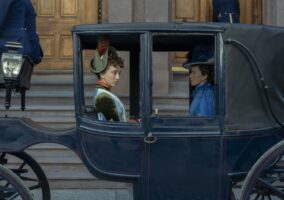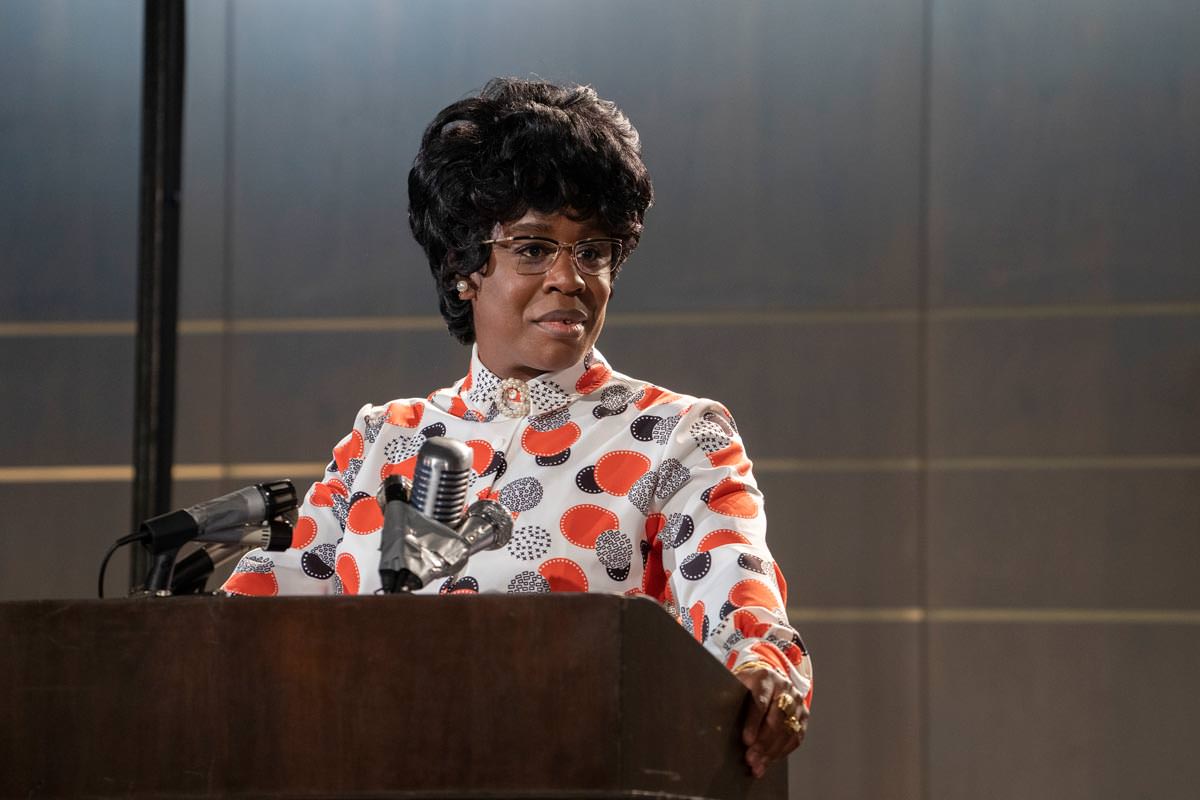
As we noted in the previous installment, costume designer Bina Daigeler is working with historic figures who not only had a huge media footprint back in the day, but were also quite distinct in their personal style. You only have to say the names Gloria Steinem, Phyllis Schlafly, Bella Abzug and Shirley Chisholm to anyone with knowledge of these people and they’ll instantly see them in terms of their personal style. For Steinem, it was aviators and long, center-parted hair. For Abzug, it was her fondness for large hats. For Schlafly, the look was ladylike white middle class housewifery. And for Shirley Chisholm, it was the same thing practically all black politicians in America must contend with on some level: respectability drag.
First, let’s run through several of Uzo Aduba’s costumes this episode. She was, by the way, absolutely spectacular in this hour and the entire episode was thrilling to watch because it was nothing but women talking to each other about the kinds of things female characters so rarely get to talk about in films and television: power, politics, ambition and compromise.
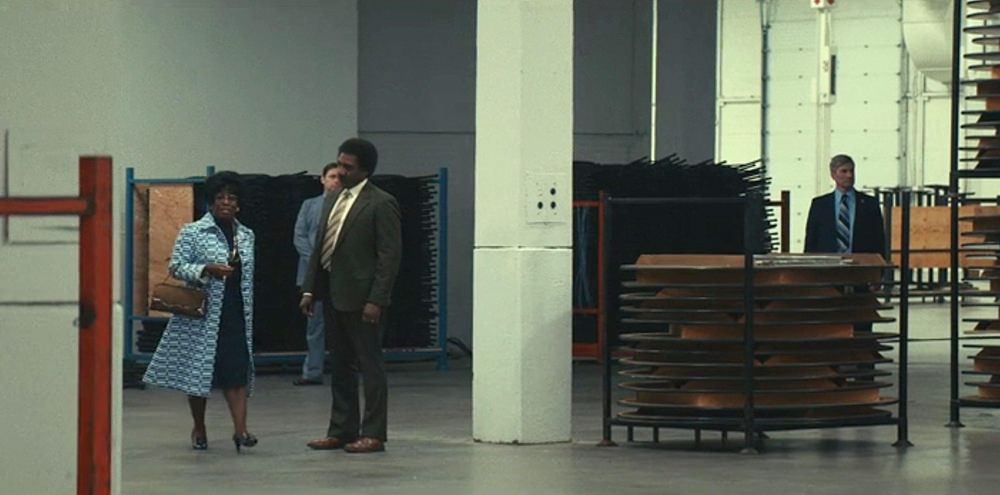
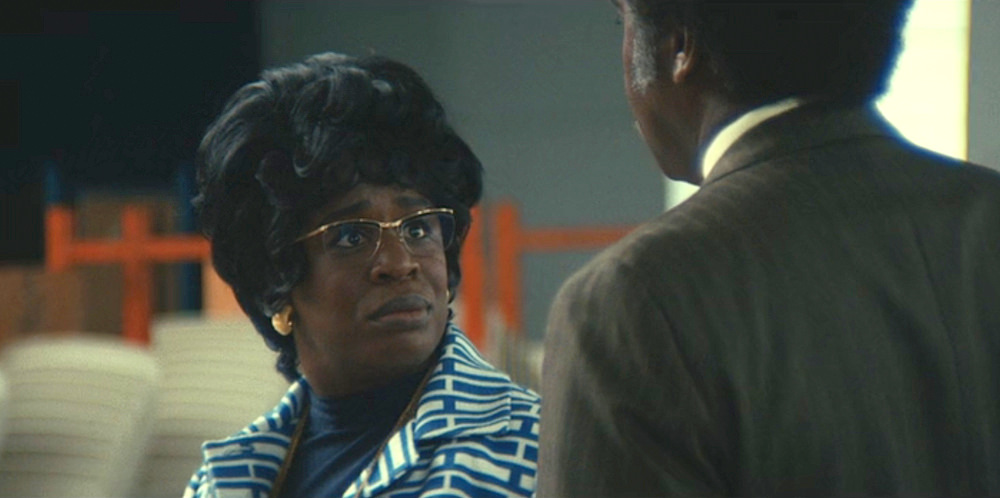
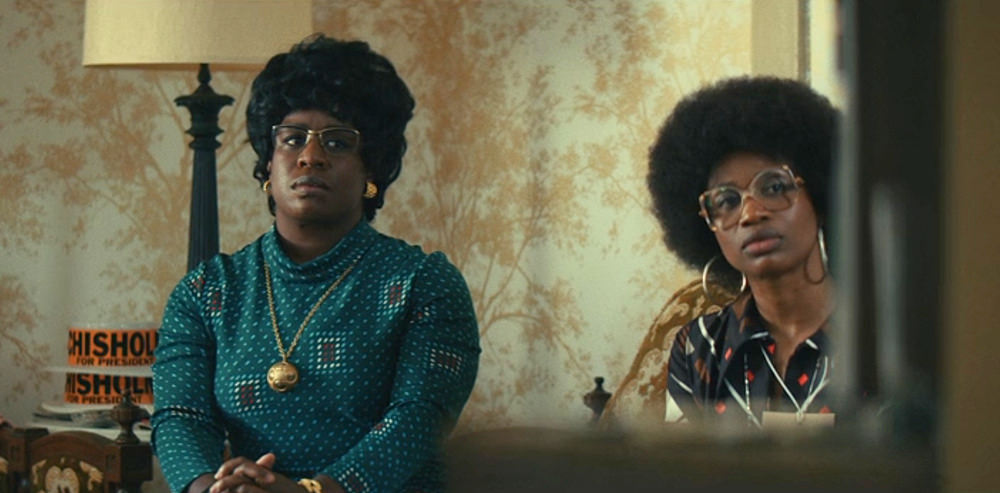
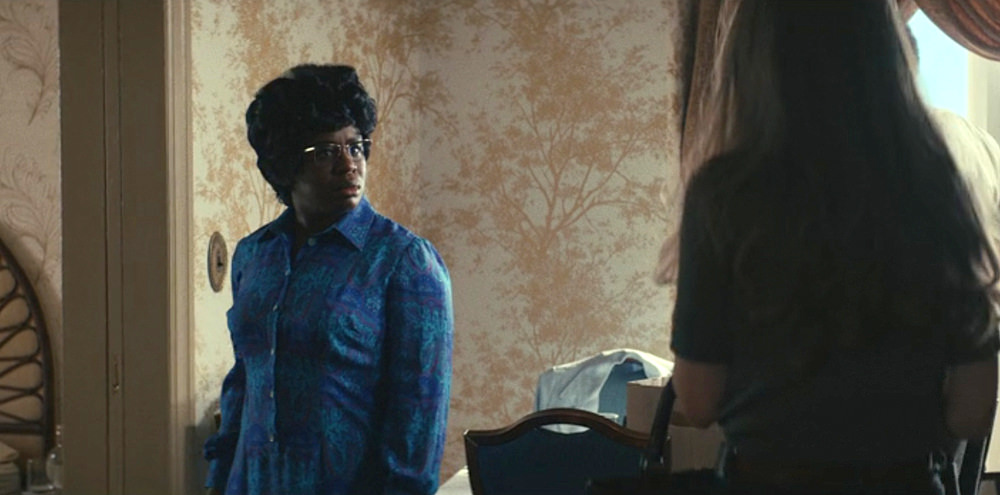
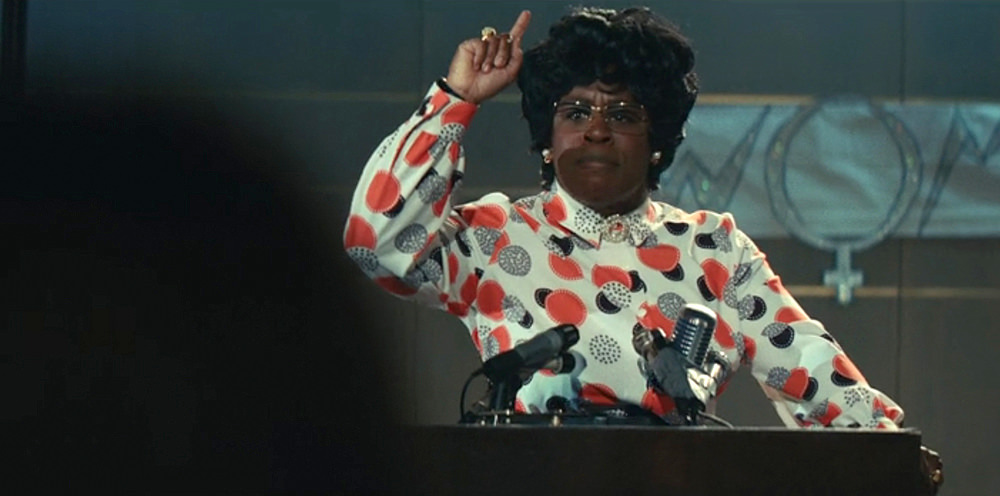
If you do a Google image search on Shirley Chisholm, most of these outfits show up on the first page of results. They’re recreations of the real Shirley’s personal style rather than any sort of interpretation of it. That doesn’t mean we can’t go in for a little analysis, however. First, we can note that she clearly had a preference for prints, but mostly stuck to geometrics. You see her in a floral here or there, but she didn’t seem to be too big on them during this time, nor did she have much use for stripes or plaids, which honestly might have made a bit more sense for her as a presidential candidate, since they can both be seen as more masculine prints; the type of prints men in power sported.
But she tended to eschew looks that might have been more expected of her, including wild floral or botanical prints (very popular at the time). We note this because it feels like her use of bold geometrics was fairly calculated. She stood out on any political stage by the nature of her existence, but she also used clothing to keep the eye on her, to make her look almost shocking in the setting. And of course, all her prints were picked partially because looked good on television. The relative lack of floral, botanical or animal prints in her clothing speaks of someone wanting to avoid cliche as much as possible. At a time when the phrase “Black Power” was ascendant and black political leaders were donning dashikis and growing out their afros, Shirley was serving a form of respectability in her power dressing. All national-level politicians want to make themselves palatable to the public and for Shirley, that meant looking as respectably upper middle-class as possible. It wasn’t an option any of her white feminist sisters needed to concern themselves with.
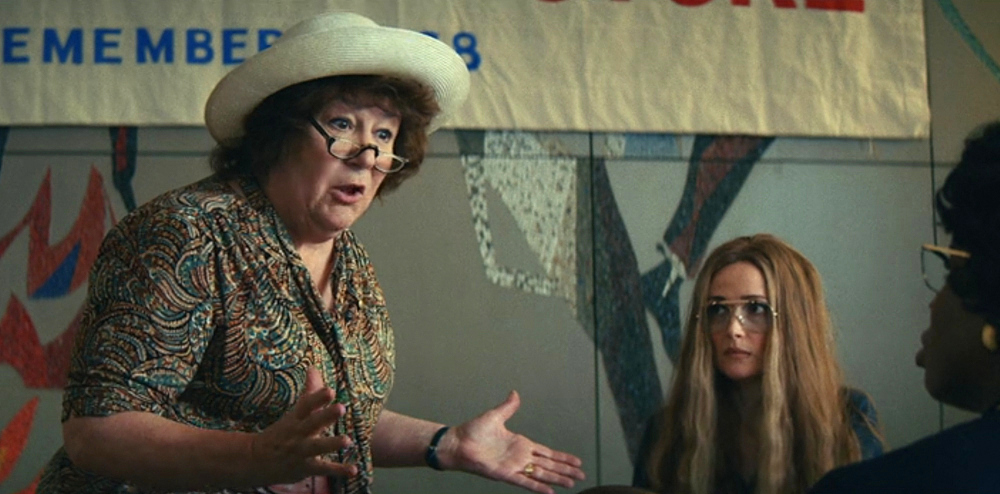
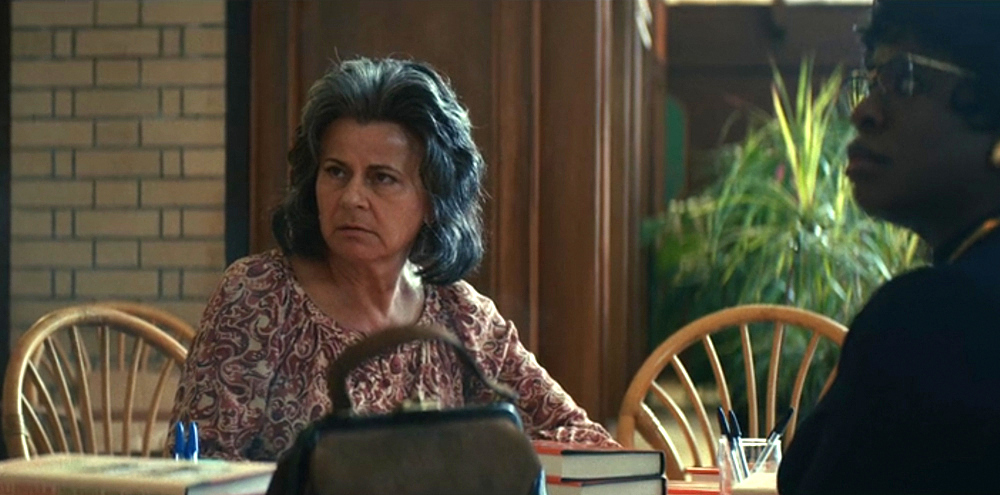
Bella had her signature hats (and her signature somewhat rumpled style), Gloria had her signature hippie hair and aviators. It seems somehow more appropriate that Betty Friedan, who more or less presented as a typical middle-class, middle-aged white woman without any style idiosyncrasies or need to interpret herself through her clothing choices, was the one in this scene who most connected to Shirley and offered her unwavering support.
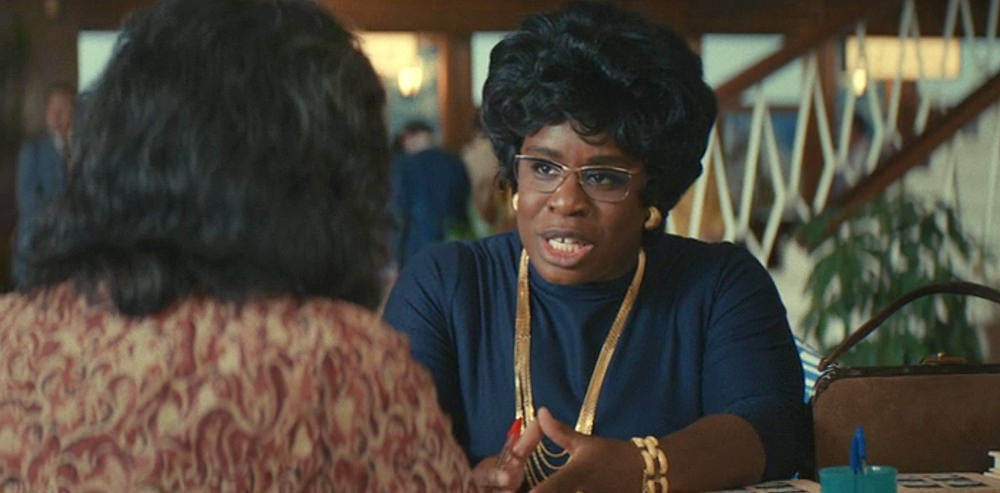
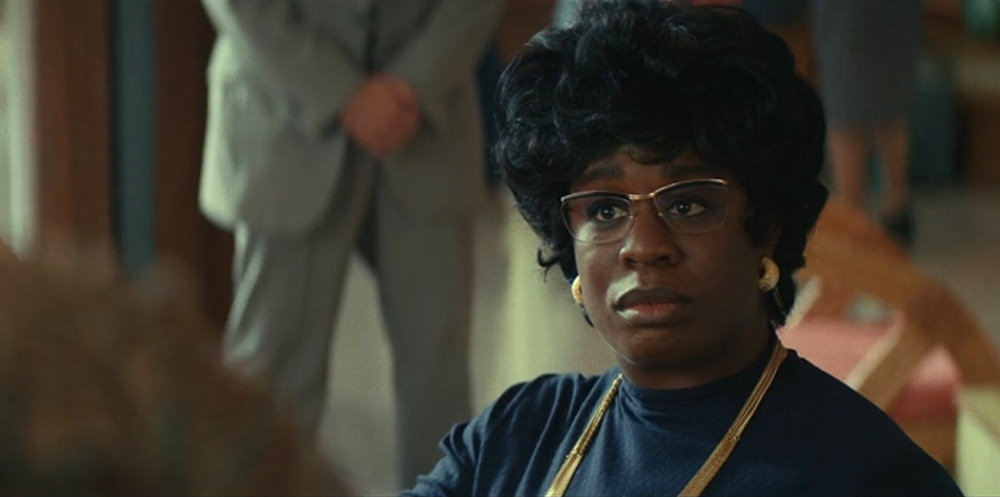
Look at how much gold she’s wearing. How much more “turned out” she is in comparison to the others. The hair is coiffed and set, the earrings, necklace and bracelet all match, and the overall impression is one of refinement and wealth, two qualities that are practically synonymous with power in the American mind. As we said, it’s to be expected that a presidential candidate would present themselves as well as possible for a convention, but it’s notable how little of the classic female politician style was evident in her choices. She did it her way, and her way involved straddling a nearly impossible line of appealing to her black constituents and somehow breaking through all the barriers and appealing herself to as many white voters as possible. The result was a look that seemed to take elements from refined white ladyhood and elements from African-American church styles. Nothing “exotic” or too political – although she did favor suits more than you see here. Nothing that could be coded as “African” or radical. Respectability drag.
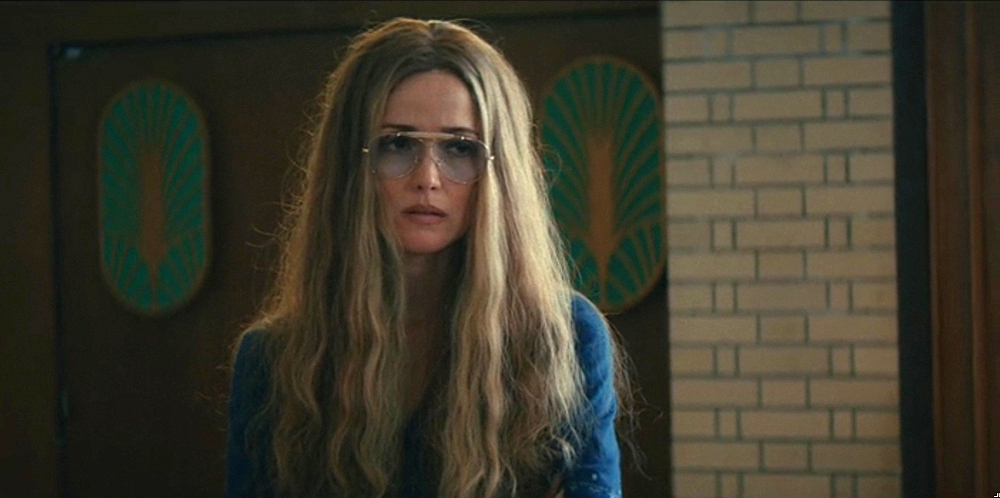
Gloria could wear mini-skirts and boots and grow her hair until it was halfway down her back. She could ditch her bra and grow her nails long, if she wanted to. She could even stand on the floor of the Democratic convention in a denim jumpsuit:
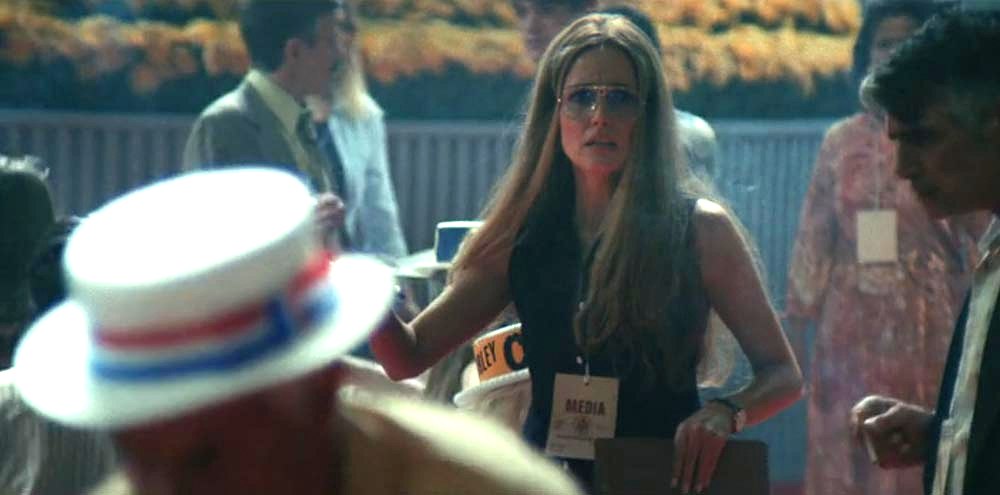
There’s a certain level of privilege and freedom as a white woman that allowed her to navigate the halls of power and do high-level wheeling and dealing without having to concern herself with whether or not she was respectable enough. Shirley clearly recognized on some level that she didn’t have that option.
A short side trip to Fantasyland:
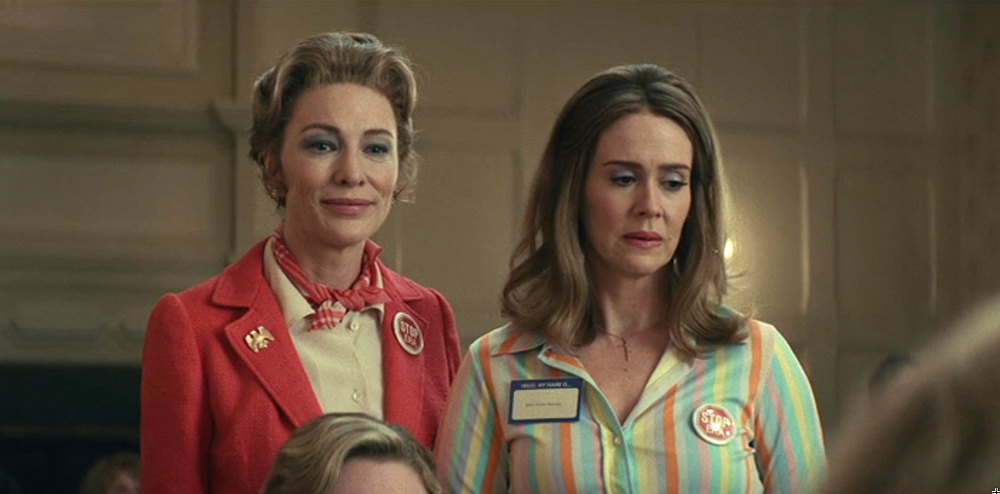
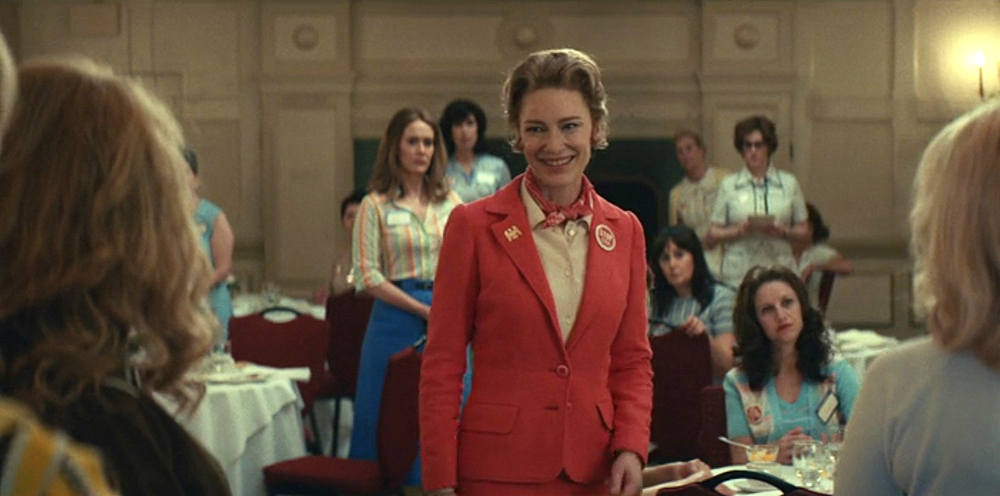
Playing out alongside Shirley’s abandonment by her white feminist allies was a parallel story about Phyllis having to deal with a near-insurrection in her own movement over race, during its own convention. Sarah Paulson’s Alice (a fictional character) became very perturbed by the racist rhetoric the ladies from the southern states were utilizing in their speeches and Phyllis, depicted as uncomfortable about it herself, winds up putting her political skills to the test when Alice confronts them and the group starts splintering in front of her eyes. Some critics have bristled at the idea that this show turns Schlafly into a more nuanced figure than she was in an attempt to make her more palatable and even admirable to the audience. We haven’t weighed in on it yet because we wanted to see enough of the show to make an observation. And in our observation, they dropped the ball on this one in a clear attempt to parallel the feminists’ story as much as possible. Schlafly was very comfortable dropping racist rhetoric in her speeches for the entire length of her public career. Having a fictional conservative character like Alice inject reason and openness into a movement that historically showed very little of either is kind of problematic and cheap. But turning a political figure known to make racist comments into someone who’s uncomfortable with racism but begrudgingly allowed it into her movement for reasons of political expediency and gamesmanship – in an attempt to parallel her biography with one of the leading feminists of the time (and pretty much all time) – is an ill-advised creative decision at best.
Having said that, note how Phyllis appears so much more businesslike than most of the women. Ironically enough, she’s in a suit with typically masculine design motifs. This scene is meant to show her as something of a political mastermind (while Gloria is shown to be making an enormous political blunder in her attempts at compromise). The image of her in something akin to a men’s suit (albeit with “feminized” details like the color, the fit, the skirt and the scarf), solidifies her image as a player. Again, note that Gloria was on the stage at the Democratic convention in a denim jumpsuit, not remotely attempting to code her image as powerful.
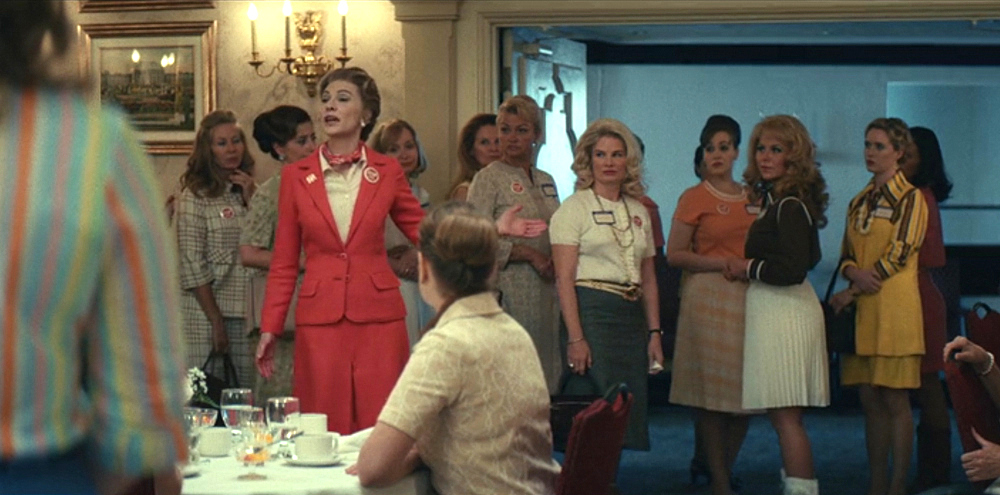
If you haven’t seen the episode, can you pick out the two racist southern women?
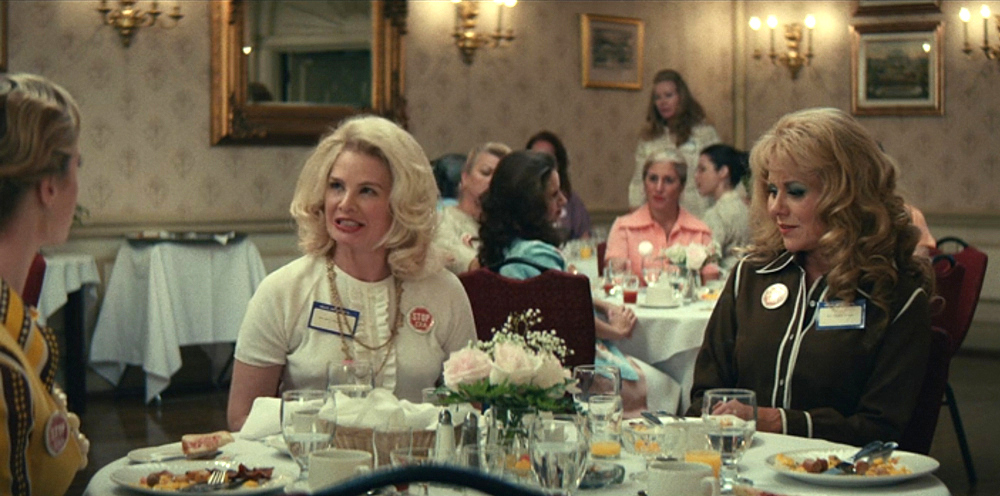
They’re the ones with the biggest hair and heaviest makeup in the room. Aside from that, these ladies are fairly unified in their dress style. Meanwhile, on the Dem convention floor…
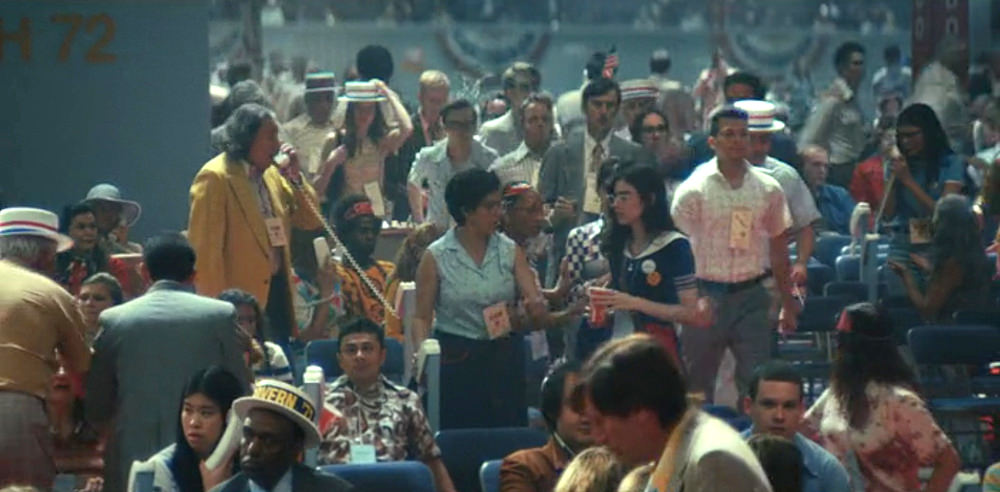
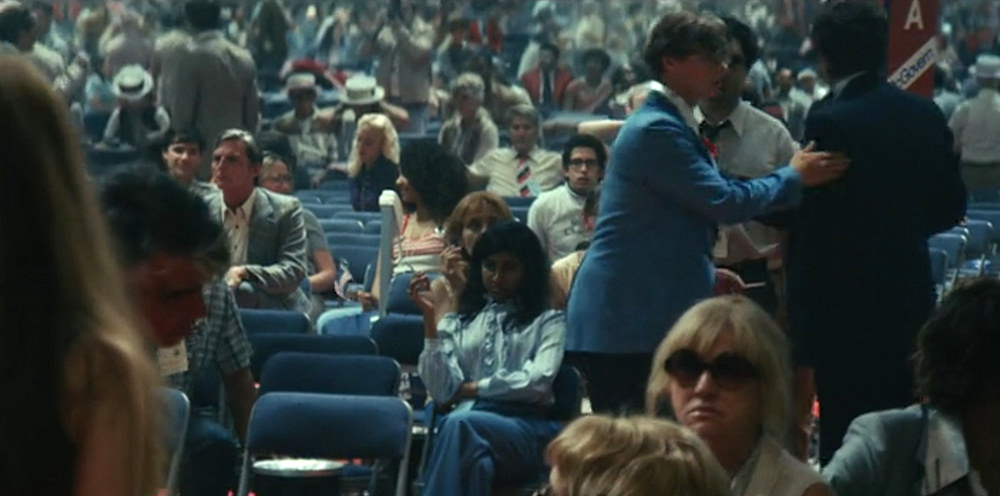
Chaos and disunity reign.
Okay, not really. These shots are all staged to replicate the 1972 convention and they do it rather nicely. They also tend to frame and highlight something that has been true of Democratic politics for the last 50 years; something that erupted in ’68 and solidified the party’s identity in ’72: it’s a collection of disparate coalitions. At Phyllis’ little convention, there’s far less variation in the looks, the styles, and of course the race and gender of the people in attendance. The implication being that it’s easier to do politics when everyone starts out on the same page.
After more or less being thrown under the bus by her white allies, Shirley takes the stage with the party’s choice of candidate, in a moment that plays like a bitter triumph.
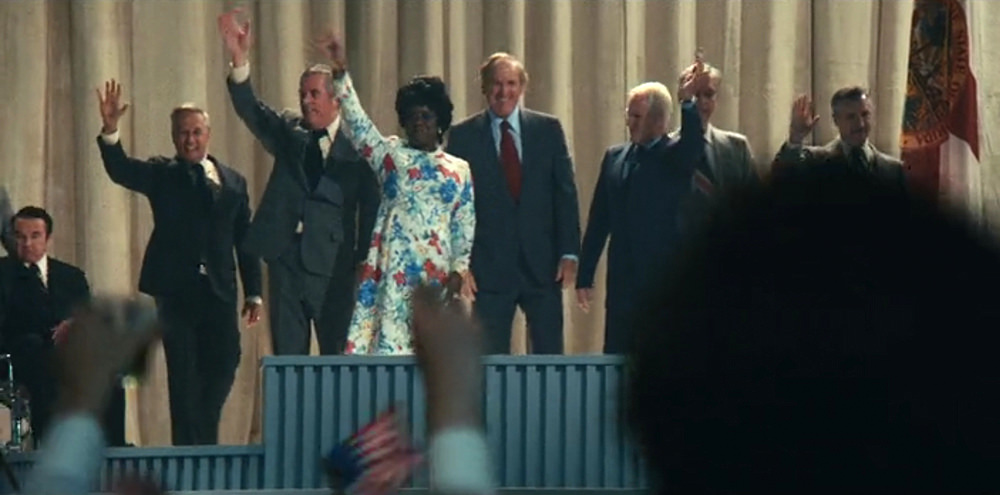
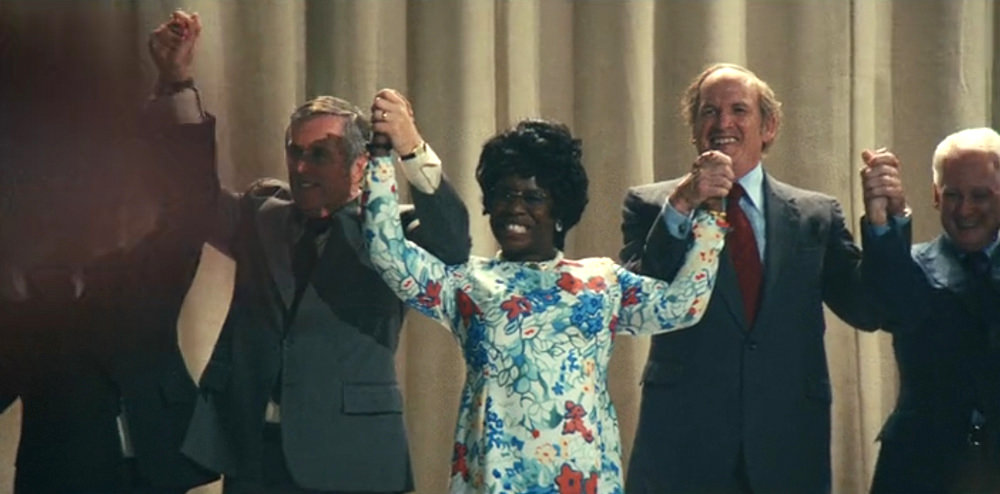
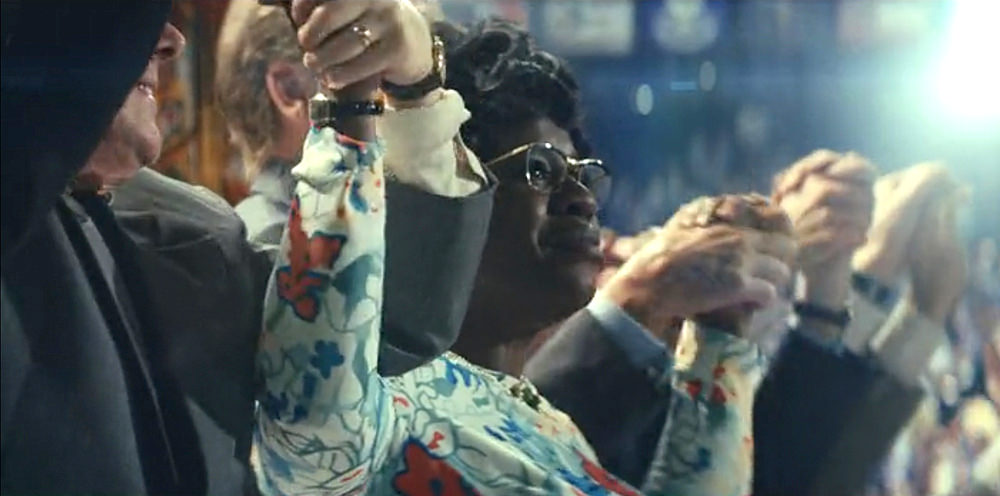
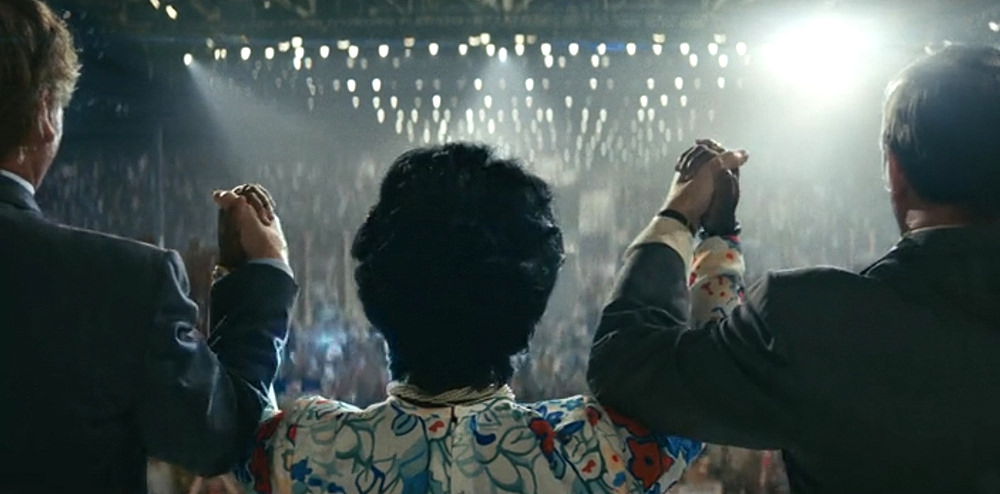
Shirley argued for revolution over symbolism in her politics, but on that stage, making history as a figurehead in a vibrant floral and pearls, looking colorful and feminine in the traditional sense as she gives away her power to a white man, symbolism won out.
[Phoot Credit: Pari Dukovic/FX, Sabrina Lantos/FX – Stills: FX via Tom and Lorenzo]
Emma Stone, Léa Seydoux, and Alicia Vikander for Louis Vuitton’s “New Classics” Ad Campaign Next Post:
Virtual Book Tour: T Lo at Google!
Please review our Community Guidelines before posting a comment. Thank you!

